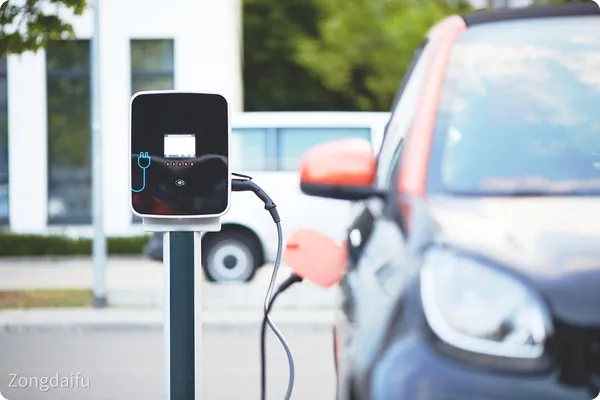In 2023, Chinas export of charging piles will continue to grow, with Europe becoming one of the core markets, accounting for more than 30%. Countries such as Germany and the Netherlands have become major destinations due to their high penetration rate of new energy vehicles and large gaps in charging infrastructure.Export to EuropeThe current situation in the country, the required documents, entry requirements, and how to effectively control the cost and time spent.
Export Status and Market Opportunities
1. Market size and growth
Export amount: Chinese customs data show that in 2023, Chinas exports of charging piles to Europe reached US$1.23 billion, a year-on-year increase of 48%, accounting for 35% of the global charging pile exports.
Core Markets: Germany (32%), the Netherlands (18%), and France (15%) have strong demand, and the growth rate in Eastern European countries (Poland and Hungary) exceeds 60%.
Product Structure:
- AC charging piles (7kW-22kW): 55%, mainly used in home and commercial scenarios;
- DC fast charging piles (50kW-350kW): accounting for 45%, with highways and public charging stations dominating the demand.
2. Competition landscape
China Advantages:The cost is 30%-50% lower than that of European domestic products, and the technology is mature;
challenge:European local companies (such as ABB and Siemens) are accelerating their layout, and policy subsidies tend to localize production.

List of necessary documents for export
1. Basic files
- commercial invoice(Please specify voltage, power, and IP protection level);
- Packing List(Separate by module, mark weight and size);
- Bill of Lading(The consignee needs to provide EORI number).
2. Compliance Documents
- CE certification:Covering LVD (Low Voltage Directive), EMC (Electromagnetic Compatibility), RED (Radio Equipment Directive);
- RoHS Test Report: Prove that 10 harmful substances such as lead and cadmium meet the standards;
- Certificate of Origin(CO or FORM A): Enjoy the EUs most-favored-nation tariff (currently the average rate is 2.5%).
3. Special files
- OCPP protocol compatibility certification: Public charging stations must comply with Open Charge Point Protocol 2.0;
- Metering module MID certification:Charging piles with billing function must pass MID 2014/32/EU certification.
Certification criteria
1. Compulsory certification
CE certification:
- LVD (EN 61851-1): electrical safety test;
- EMC (EN 61000-6-3): Electromagnetic compatibility;
- RED (EN 301 489-1): Wireless communication modules (such as 4G/Bluetooth).
RoHS 3(2015/863/EU): Restrict 10 types of hazardous substances.
2. Voluntary certification
TüV Mark: Improve market trust, especially for the German market;
ISO 15118: Electric vehicle and charging pile communication protocol certification.
3. Localization requirements
- On July 28, 2023, the European Union officially promulgated the new battery regulation (EU) 2023/1542, requiring that the batteries built into charging piles be removable and recyclable;
- Germany will require mandatory carbon footprint certification for public charging piles starting in 2025, and products that fail to meet the standards will be prohibited from bidding for government projects;
- Calibration Services: Equipment containing billing modules must be calibrated by an EU notified body (such as TüV Rheinland);
- Language Tags: The operating interface and manual must be provided in the official language of the European Union (at least English, German and French).

Packaging label
1. Packaging specifications
Shockproof and waterproof: IP67 protection box, filled with EPE foam;
Modular design: Split packaging (pile body, cable and accessories are packaged separately), single box weight ≤ 30kg;
Environmentally friendly materials:Complies with EU Packaging Directive (94/62/EC), plastic content ≤5%.
Wooden packaging: If wooden boxes are used, IPPC fumigation marks must be affixed and certificates must be provided.
2. Logo content
Mandatory marking: Clearly mark the CE mark, model specifications, production date, place of origin and WEEE directive recycling mark.
Information Tags: Indicate the manufacturers name, address, customer service phone number and safety warnings (such as high voltage danger) in English or the language of the target country.
Fast clearance strategy
1. Pre-declaration and data matching
- Submit electronic customs declarations in advance through the EU Import Control System (ICS);
- Make sure the HS code and CE certificate number are exactly the same as the goods.
2. Application for tariff preferences
- Apply for the Processing Trade Manual to import raw materials for processing and then re-export to reduce tariff costs;
- By using the Temporary Import Certificate (ATA Carnet) to participate in European exhibitions, you can temporarily be exempted from customs duties.
3. Logistics channel optimization
- The Maritime: From Shanghai/Ningbo to Rotterdam (25-30 days), the full container freight is about $4500/40HQ;
- China-Europe Express: Chongqing to Hamburg (18-22 days), suitable for high value-added products.
4. Local compliance services
- Entrust the European Union Authorized Representative (EC REP) to handle post-sales and compliance disputes;
- Bonded warehouses are established in the Netherlands and Germany to achieve rapid distribution.

In summary, although the demand for charging piles in Europe is strong, the compliance threshold is high and the competition is fierce. Chinese companies need to seize the market opportunities with technology upgrades and compliance capabilities. I hope the above content will be helpful to you in developing export business. If you need our further support, please feel free to contact us!


 Follow Customer Service WeChat
Follow Customer Service WeChat